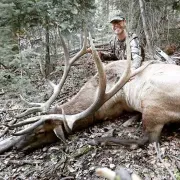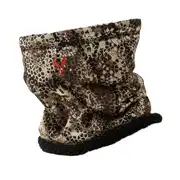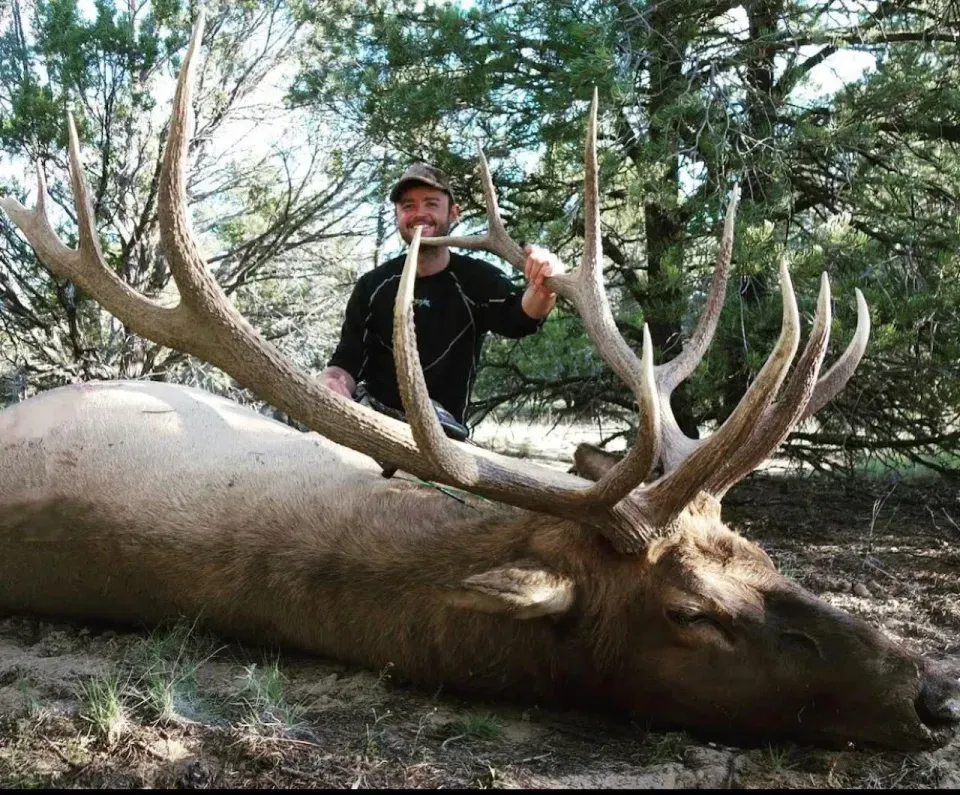
Recommended Equipment List for Guided Rifle Hunts -Base Camp Outfitters
This gear list contains everything you need to know before you take off on a guided rifle hunt with us at Base Camp Outfitters, along with what products we recommend you bring with you for your trip. Don't hesitate to give us a call about any specific gear questions. 970-596-5510. We look forward to having you.
May contain sponsored links*General Considerations
The best gear you can bring is a pair of lungs and legs in the best shape possible. All the money in the world can't buy gear that will replace fitness. If you smoke, try your best to quit before your trip.
Use all your gear before your trip. This especially applies to boots, day packs, and safety equipment. New, not-worn-in boots can ruin a trip. Making sure your day pack fits well will make your trip more enjoyable.
Review the Colorado Big Game hunting brochure for the most up to date regulations:
Paperwork
Licensing and Regulations
Anyone born after Jan. 1, 1949 MUST carry a Hunter's Safety Card OR get verified with CPW and obtain a CID number with the state. You MUST carry your Hunter Safety Card with you while hunting or have a verified CID number!
-Big Game Brochure with regulations. This is available in stores and online. Prior to arriving to camp, please read the pages regarding hunting laws and common violations (2021 big game brochure pages 14-16).
-Muzzleloader and rifle hunters must wear an orange hat and vest. No camo-orange it must be solid. Pink is now allowed too.
Payment
When paying prior to arrival via Venmo or Paypal please contact us for instructions.
When paying at arrival to Base Camp then cash is preferred. Cashier's checks are OK. We do not accept personal checks when paid at the time of arrival. If paying by personal check, please send checks by August 1st to allow time for cashing prior to your hunt. Things get busy around here starting August 15th. No credit cards are accepted.
Clothing (Hunting)
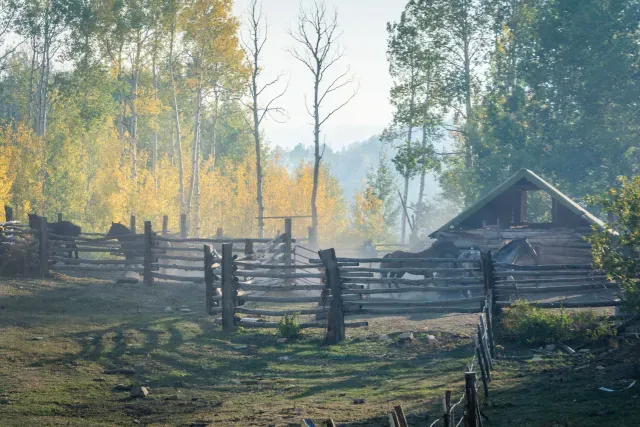
The weather in October/November is unpredictable and any day can turn out to be a winter day up in the high country. A large portion of our hunting area is around 8,500ft. Days are typically into the 30's- 40's with nights typically in the 10's-20s. It's possible that highs can get as high as 50's and lows can be below 0. A good layering system is the best way to stay comfortable with the big fluctuation of Colorado weather.
Stay away from cotton, i.e. Carhartt, blue jeans, cotton socks, etc… When cotton gets wet it is useless and it will exacerbate suboptimal weather's effect on your body. Focus on wool and synthetics. There is a lot of newer technology clothing that is lightweight, packable, warm and dries quickly.
***Bring quiet gear. If it goes "swoosh" when you move, don't bring it.***
What to Bring:
Base Layers
2-3 Pairs of long underwear sets
Daily Layers
5 Mid-weight hunting shirts
2-3 Mid to heavy-weight hunting shirts for layering
1 Mid to heavy-weight puffy for layering
3 Pair mid-weight hunting pants
1-2 Pair heavy-weight hunting pants
Outerwear
1-2 Heavy hunting jackets for cold weather
1 Full set of rain gear
Accessories
2 Pairs of gloves
1-2 Fluorescent (orange or pink) baseball hats
2 Warm hats and/or balaclava
Daily Layers
Mid-weight Shirts
-Best to have a long sleeve, moisture-wicking base layer shirt against your skin. On guided hunts out of the cabin, we suggest a fresh one for every day of hunting. These should be mid-weight merino wool, polyester, nylon, or some modern techy material blend designed to wick moisture. NO COTTON. If you run hot a lightweight version is fine for the base layer.
Mid/ Heavyweight Layering Shirt
-This could be a mid-weight merino, lightweight-midweight fleece, or other non-cotton material. This layer is often a quarter-zip, something like a Sitka core mid-weight hoody.
-This layer could also be a vest if you prefer a greater range of motion.
Mid/ Heavyweight Layering Puffy
-Something packable if we need an extra layer for cold sits. Also nice for sitting around camp.
Mid-weight Pants
-Anything quiet, comfortable, and non-cotton will be fine. Be sure these are quiet and don't go "swoosh" when walking.
-If you have more than 3 pairs you can bring them.
Outerwear
If you run cold, bring an insulated jacket or vest in addition to these layers.
Heavy Cold Weather Jacket
-Wool or wool/synthetic is best.
-Needs to have wind-stopping attributes.
Accessories
Gloves
-One mid-weight (wool is best) and one heavier pair of gloves are optimal.
-Glommits are great because they allow us to use our fingers.
Florescent Orange Baseball Hats
-This will be your primary daily hunting hat. Some sort of hat that shades your eyes. Bring two in case one gets wet and needs a day to dry.
Balaclava/ Warm Hats
-Usually merino wool or fleece beanies, fluorescent orange unless the baseball hat will go over.
-Neck warmer or balaclava, fleece is perfect, this is great for cold mornings and evenings.
Footwear

What to Bring:
1 Primary pair of waterproof hiking boots
1 Secondary pair of boot
1 Pair of camp shoes
7 Pairs primary socks
Gators (optional)
Primary Hiking Boots
-A boot that fits your foot and is comfortable is most important. We prefer a lighter-weight, not super stiff boot, that provides good ankle support. Some light weight, mid-height, type hiking boot works best.
-Try to visit a retail location where you can try on different boot models. Fit is essential.
-Wearing boots that are uncomfortably high can cause "shin bump", an uncomfortable sore spot on your shins.
-Be sure to wear and break these boots in before the hunt. Typically, 10 miles of hiking will break them in. The more mileage you can put on your boots before the trip the better off you will be.
Secondary Boots
-We recommend bringing another heavier set of boots for backup. Preferably something you've worn before, that are broken in, and are still comfortable enough to put some miles in. The second pair of boots will be used if the first pair gets wet or if we have snow on the ground. We will do our best to dry boots out by the wood stove but a backup pair is a must.
Camp Shoes
-A pair of tennis shoes will work well as camp footwear. Something pretty easy to slip on and off.
Socks
-The best option is wool. We prefer lightweight to mid-weight merino wool socks. One pair per day in camp. If layering with two pairs, a mid-weight over a light-weight and more pairs might be necessary.
Gators
-Great in snow and/or rain. Also great when dealing with high, frosty of dewy vegetation.
-Keep your boots and feet dryer.
Clothing (Camp)

We will be eating breakfast lunch and dinner at camp. Be sure to bring separate clothing for camp to avoid having camp smells get on your hunting clothes. Cotton is okay for camp clothing. Camp clothing doesn't need to be camo and includes the following:
What to Bring:
Pants/ Shorts
Shirt/ Sweatshirt/Heavy coat
Slip-on Shoes
Hat
Any other comfortable loungewear
Personal/ Camp Gear
Shower Items
-Bring a bath towel, wash cloth, bar of soap and anything else needed for personal use in the shower house.
-Toothbrush, toothpaste, floss, deodorant, and other personal toiletries you'd use in the bathroom and shower.
Sleeping
-We will provide a twin bed and pillow with clean sheets. If you are picky about your pillow please bring one of your own.
-Something you'd normally sleep in.
-Sleeping bag for added warmth can be a good option on rifle hunts in case your fire goes out.
Personal Hygiene & Medications
It is recommended that you consult your doctor and let them know you are going on an elk hunt in the Rocky Mountains at an elevation around 9000'. Please take your doctor's recommendation on what you should bring and carry with you before you hunt. Let us know if they want you to relay any information to our guides.
We have basic first aid kits at our cabins. Our guides also carry basic first aid kits on our guided hunts. Please feel free to carry any first aid supplies that you would normally carry. Supplement with whatever your doctor suggests you carry.
Sun Protection
-Chapstick & Sunscreen 30 spf minimum
Prescription Medications
-Make sure you have enough of any prescriptions
-If you have had anaphylaxis (allergic reaction) to bees or other insects, please carry an Epi-Pen at all times.
-Pepto-Bismol, ibuprofen and other routine medications can be helpful
-Altitude medication if you have a history of altitude sickness
Prescription Eyewear
If you have prescription glasses or contacts we highly recommend that you bring a spare back-up pair.
Toilet Paper & Unscented Baby Wipes
-No better bathroom wipe around than a baby wipe. Good to have a small package of these in your pack along with toilet paper, when you need to go in the woods. A small garden shovel is also recommended. Per forest service it is recommended to dig a small hole 9" deep and then cover when finished.
-We have a toilet at the cabin. NO baby wipes down the toilet but a good option on the trail.
Food
Please let us know as soon as you can about any food allergies, preferences, or any other dietary restrictions. We will provide a light breakfast in the morning, full lunch and full dinners.
We will also have backpacking snacks to fill our packs with before we head out.
We do our best to cater towards everyone's diets and tastes. However, it is encouraged that you bring specific go-to snacks or beverages you want to have around camp or in your pack.
Backpacks &Gear

What to Bring:
Day Pack
Hydration Bladder
GPS
1 Head Lamp
1 Small Flashlight
Knives/ Game Cleaning
6 Game Bags
Accessories
Extra Batteries
Lighter
Camera/ Smart Phone
Cooler
Hydration
Knives & Game Cleaning
-Havalon or similar replacement blades are nice
-Small bone saws are not necessary. It's difficult to saw an elk pelvic bone with these small saws. Learn to short quarter elk (gutless method).
-(Not needed on guided hunts. Having a good knife on you is always a good idea, but your guide will perform your field dressing for you.)
GPS
-Always good to have a GPS that you know how to use. Your phone and OnX maps is a great option.
Game Bags
-We can hang your quarters in game bags at base camp in our cool cabin facility.
-Handful of surveyors tape to mark downed game, blood trails or signal your location
-(Not needed on guided hunts. We provide game bags on our guided camp.)
Safety & First Aid
Our guides carry basic first aid kits and our camps also have basic first aid kits in them. Again, consult your doctor and ask if there's anything specific they recommend you carry. Relay any information to us if we need to be aware of anything. It is encouraged that you also carry the basic first aid supplies you normally carry.
First Aid Kits
Safety Equipment
Accessories
Extra Batteries
Lighter
Cooler(s)
If you plan on driving or flying meat home. We can also recommend several meat processors in the area that can process and ship meat back for a cost.
Camera/ Smart Phone
-Bring your charger and/or spare batteries
-The cold can quickly discharge a charged battery
Optics
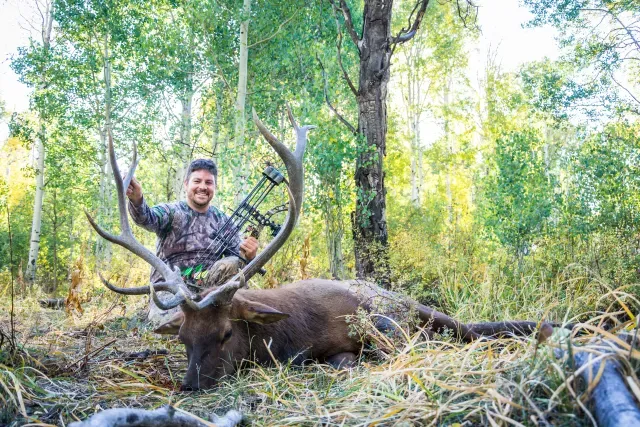
What to Bring:
Binos
Rangefinder
Binos
-Although not necessary it can be fun to more closely observe game. Bring these if you normally carry them. Spotting scopes are not necessary on our rifle hunts. Guides will have spotting scopes. I personally prefer Leica optics.

Range Finder
Our guides will have rangefinders as well.
Firearms
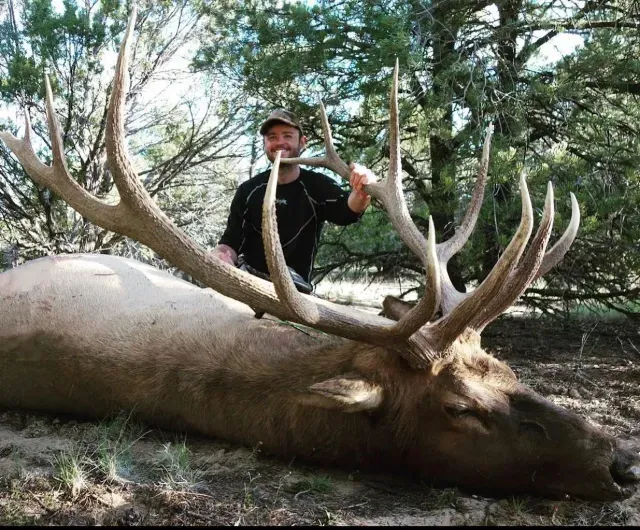
Pack your guns in hard cases.
Rifle & Ammo
-Work with gun retailer and get bullets geared towards elk
-We do not make recommendations on specifics because so much personal preference is involved. The important factor is that you have practiced and are confident at varying distances. Most shots are inside 300 yards.
-Please make sure your rifle is sighted in with the ammo your bring. Guns should be in a hard case.
Outfitter Favorites
Wonder what gear our guides run year-round? Check it out here.
